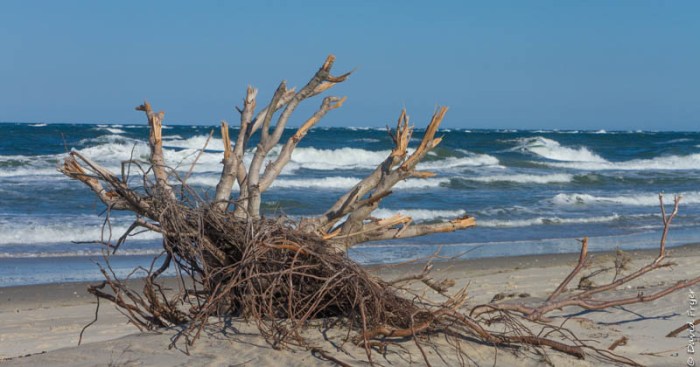
The Outer Banks of North Carolina lures many people to its shores every year. These barrier islands along the Atlantic Coast are a favorite for those who want to relax on its beaches and go fishing, boating, surfing, etc.

David and I visited the Outer Banks a couple of years ago. We took in the Wright Brothers National Memorial located on the site where Oliver and Wilbur Wright conducted their first glider experiments. We also visited the Bodie Island Lighthouse and the Pea Island National Wildlife Refuge. On this return visit, we wanted to explore some of the southern islands south that we had not explored before.
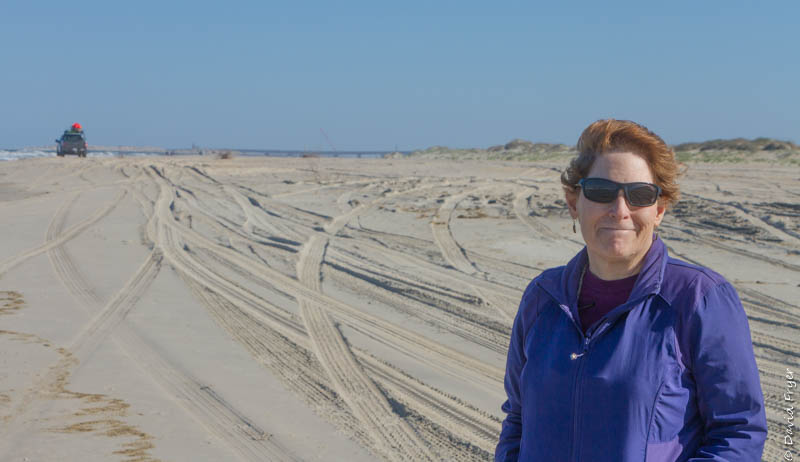
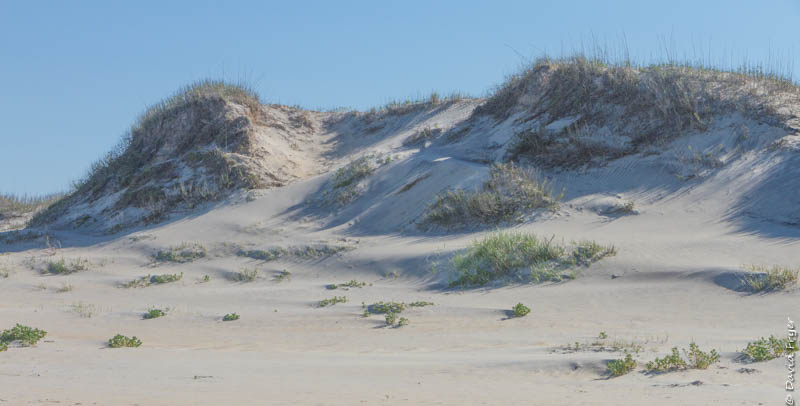

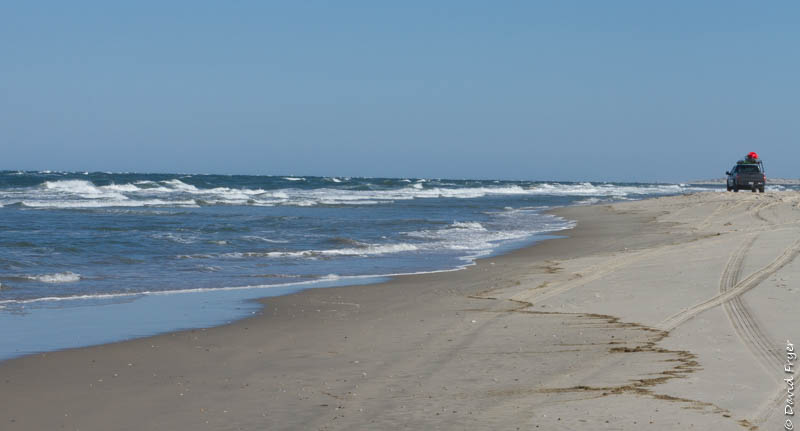
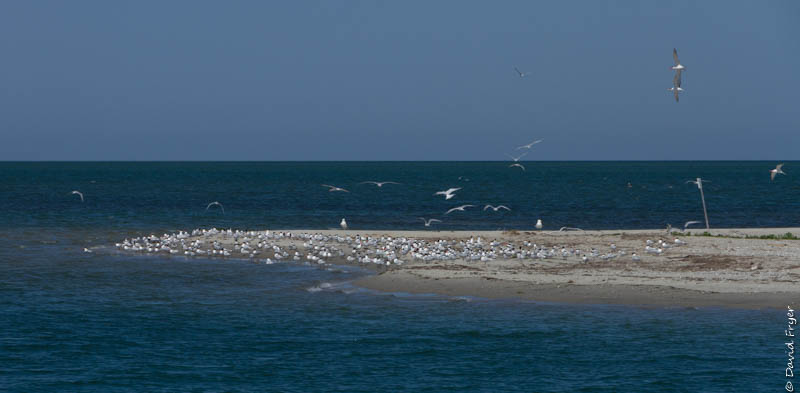
Cape Hatteras National Seashore is a 70 mile stretch of preserves, refuges, and beaches that begin at Oregon Inlet to the north and extends to Ocracoke Inlet to the south. We began our trip at Oregon Inlet, where we were camping, and we drove south through a number of small towns to the town of Hatteras. When we arrived there, we stopped at the Cape Hatteras Lighthouse.
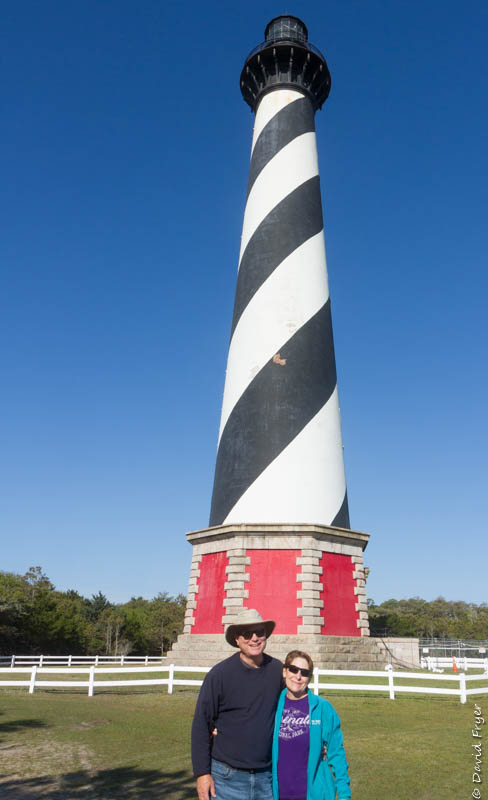
Standing at 198 feet tall, the current Cape Hatteras Lighthouse is the second tallest brick lighthouse in the world. This one is the third iteration of this light in Hatteras. The original light built in 1802 was only 90 feet tall and it was painted red so that ships could see it easily. In 1854, they added 60 feet to the structure and installed a revolving Fresnel lens. Since the current lighthouse’s construction in 1870, it has been moved farther inland due to coastal erosion. There is an ongoing discussion about moving it yet again in the future.

When the National Park Service acquired the lighthouse in 1935, the Coast Guard built a steel tower to hold a beacon and abandoned the original lighthouse. The old lighthouse was used as a lookout post from 1943-1945. Today the Coast Guard operates the navigation equipment in the Cape Hatteras Lighthouse and the National Park Service maintains its brick structure.
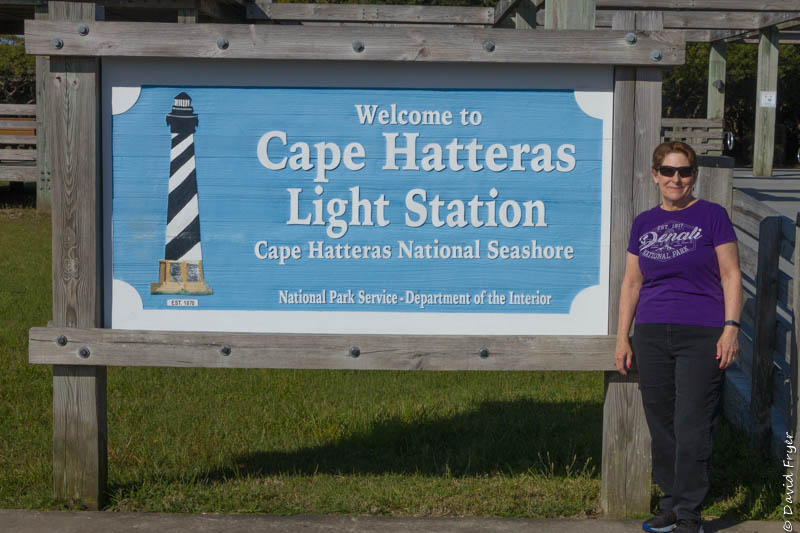
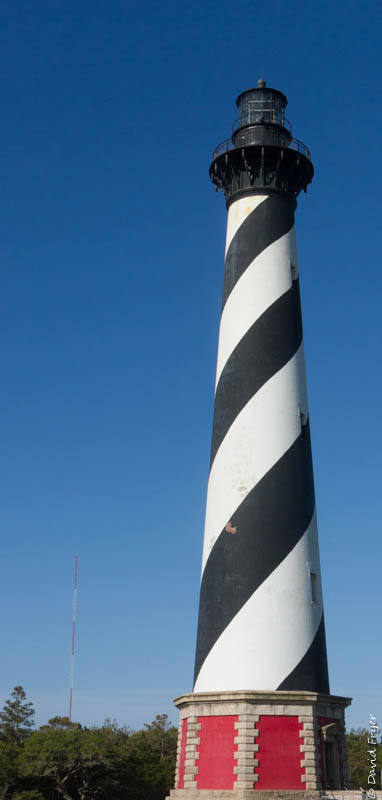
When they moved the lighthouse, they painted it black-and-white with spiral strips. The distinctive “barber shop” paint job is consistent with other N.C. lighthouses along the Outer Banks. According to Greg Brown, each lighthouse has “their own pattern to help sailors identify lighthouses during daylight hours.”
The Park Service allows visitors to climb up the tower’s narrow stairs to the top from April-October. Due to COVID, it is currently closed. Note that during the summer months the interior can become very hot. If that occurs, they will close the lighthouse.
Since we were near the town of Buxton, we had to stop at the Orange Blossom Bakery and Cafe. This establishment is always busy and it is best known for their Apple Uglies, a fritter filled with apples. If you want to sample them, you should arrive early because they are a favorite and they sell out of them very quickly.
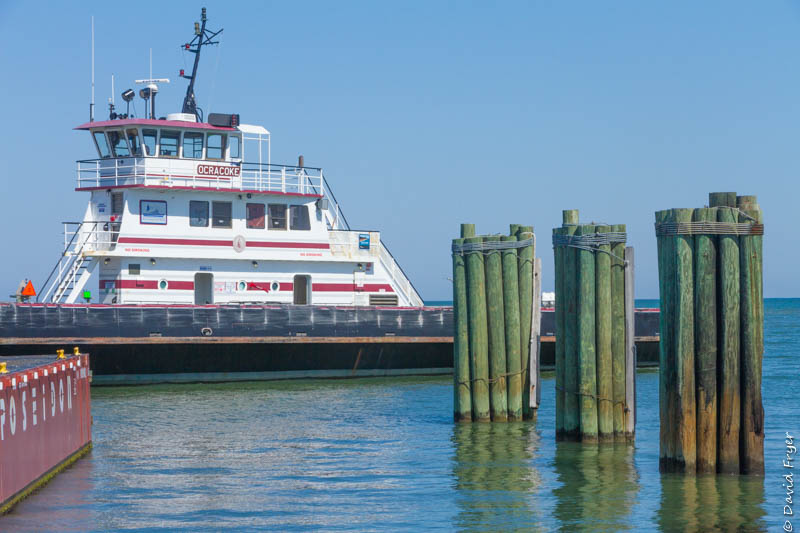
After sampling these bakery treats, we headed to the docks where we boarded the Hatteras-Orcacoke Ferry. The only way to reach Ocracoke Island is by water. The auto and passenger ferry makes frequent trip to and from the island daily. If there are a lot of people going to visit this isolated island, you may have to wait for a while. Even though we did have to wait for a bit, we did not mind. The ferry service is free and takes about an hour. It was a beautiful day and, once we boarded the ferry, we enjoyed being out on the water.


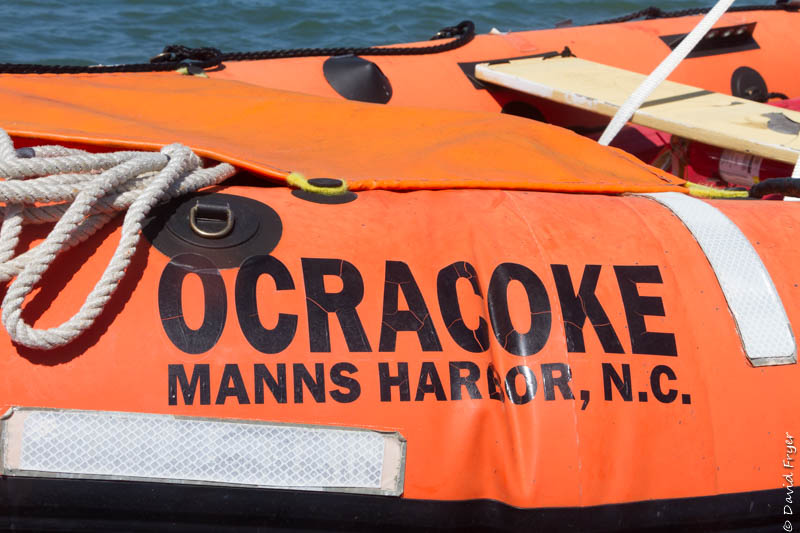
The ferry docked at the northern end of the island. We drove farther south to the town of Ocracoke. Our first stop was the Ocracoke Lighthouse. Built in 1823, this is the second oldest lighthouse still in use in the U. S. It is 75 feet above sea level and its walls at the base are 5 feet thick. Although it’s made of brick and mortar, the exterior is painted solid white.
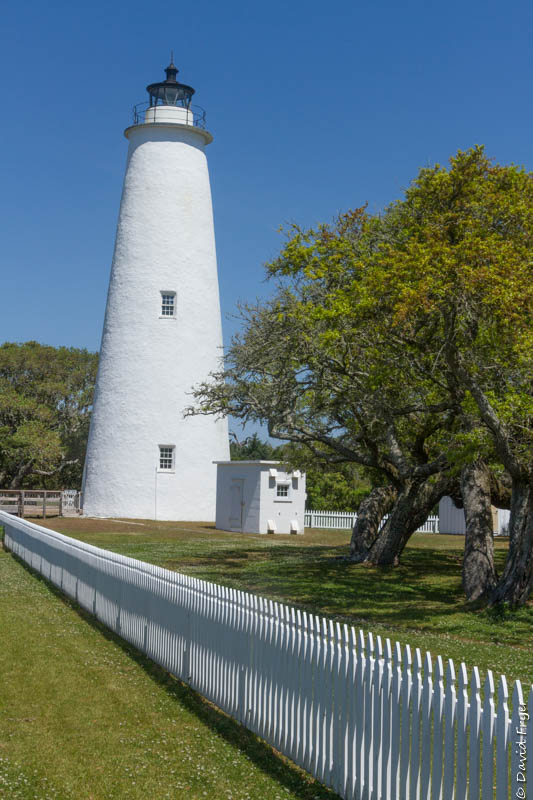
We were happy that the NPS ranger was there. He allowed us to view the interior which has a steel spiral staircase. The public, however, is not allowed to climb to the top of this lighthouse.
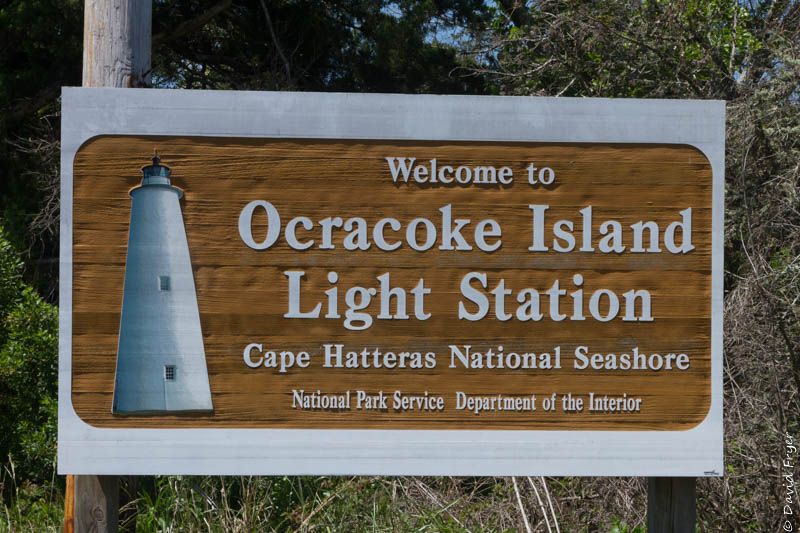
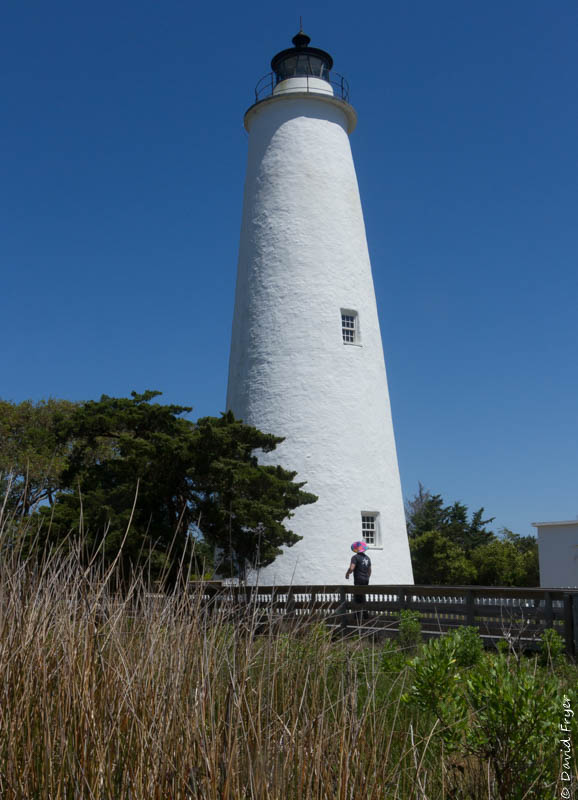
The house nearby was the light keeper’s dwelling. The two-story building is currently a private residence. The Ocracoke Lighthouse was placed on the National Register of Historic Places in 1977.
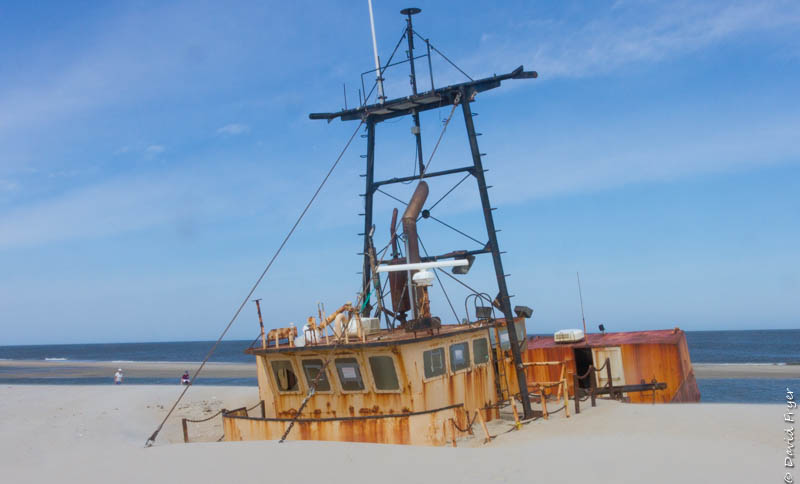


Our visits the lighthouses reminded us that the waters off the Outer Banks are so treacherous that this area is referred to as the “Graveyard of the Atlantic.” The shifting sandbars beneath the waters also cause mariners to run aground. Even today ships can find themselves in peril. We witnessed this near Oregon Inlet where we were camping. We walked down the beach to where a ship, the Ocean Pursuit, had beached. Since the vessel’s shipwreck, the sand has been devouring it and the Coast Guard has yet to dig it out. Seeing this reminded us of the risk that seafarers take and the importance of the lighthouses along the coast of the Outer Banks.
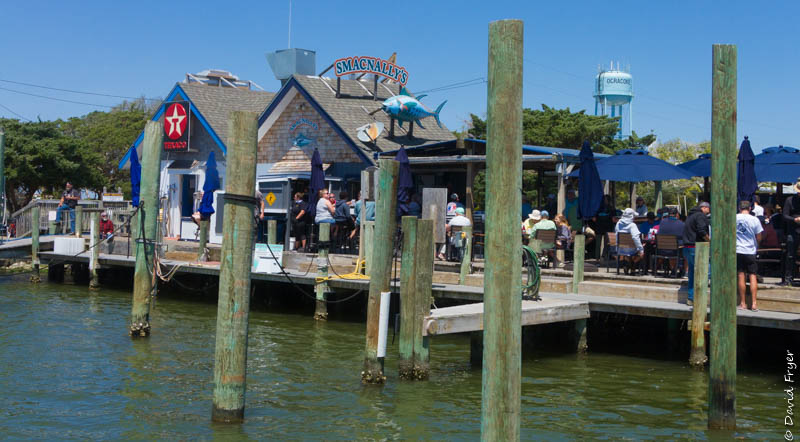
Following our lighthouse visit, we went into the town of Ocracoke which sits on the Ocracoke Harbor. This small lagoon-like body of water is very popular since all the shops, restaurants, and hotels surround it. We ate lunch at a wonderful place called Smacnally’s Waterfront Grill. The seafood was delicious.
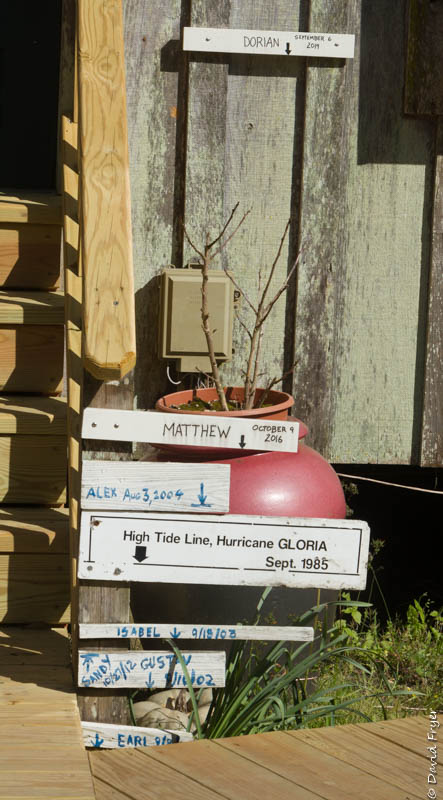
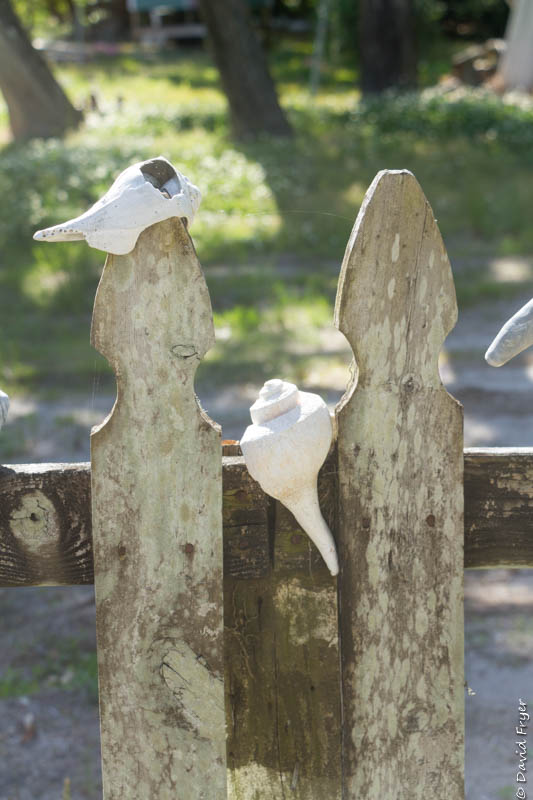
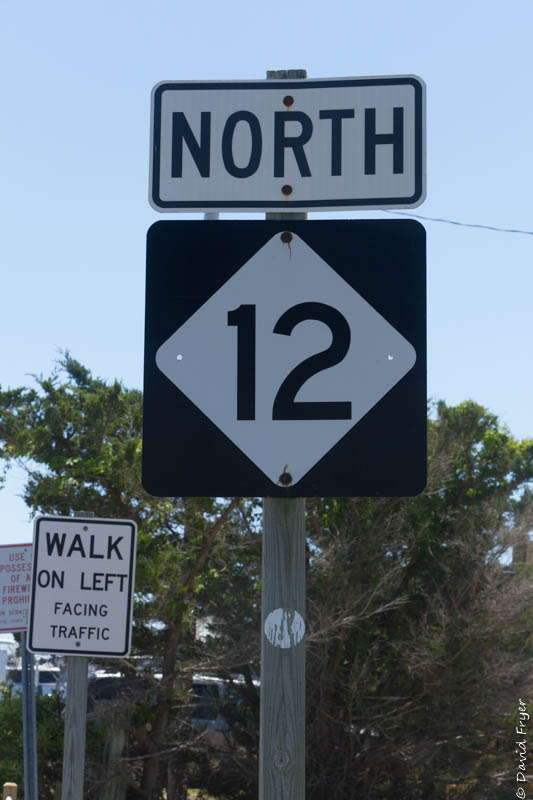
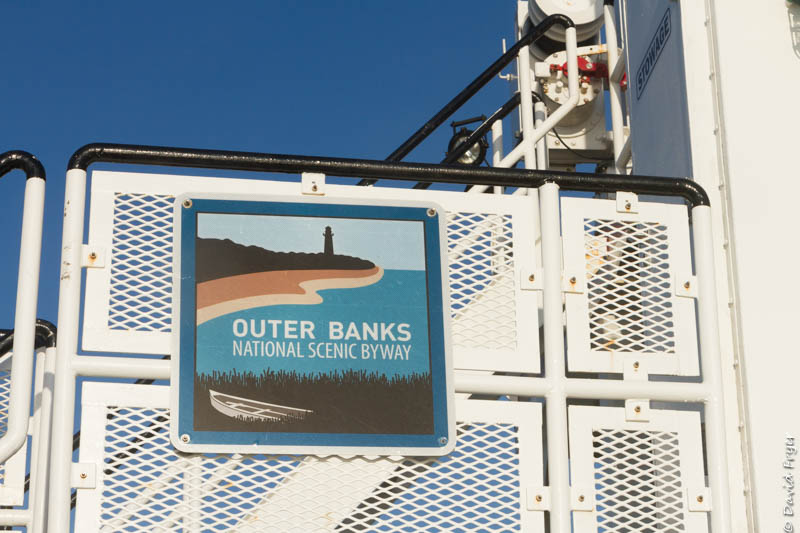
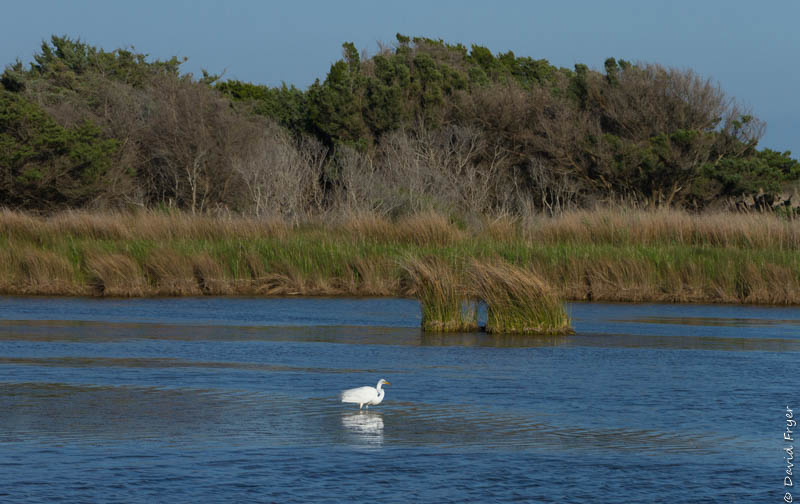
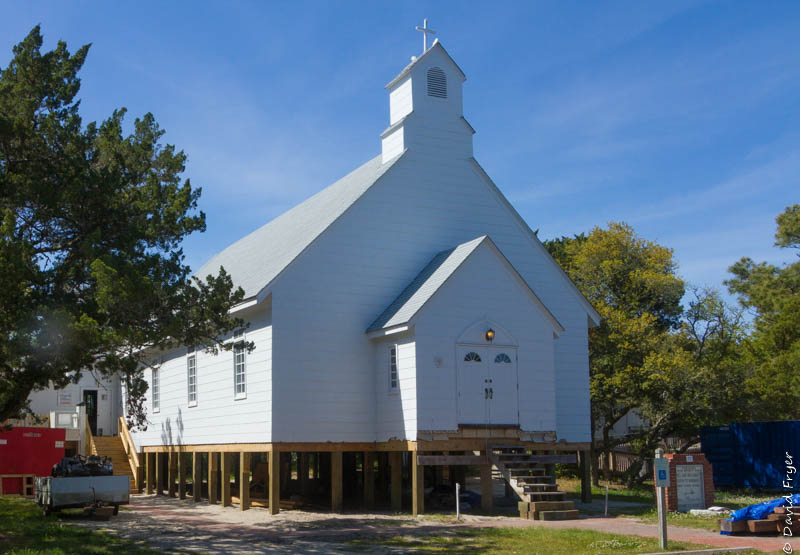
For the remainder of the afternoon we walked around the town which is still recovering from the damage caused by Hurricane Dorian in 2019. The category 5 storm packed 185 m.p.h. winds and caused significant flooding. Fortunately, there was not any loss of life. Due to the extensive flooding, we saw that many of the buildings on the island have been or are in the process of being raised 5-6 feet higher and placed on pilings. Over the past two years, much of the damage has been repaired. Since it was not summer yet, many of the businesses had not opened but they will be open come Memorial Day. Ocracoke has proven that it is a resilient community.
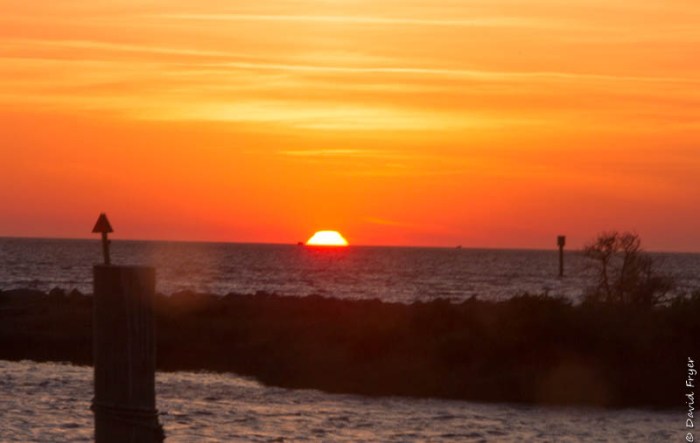
We had a great time exploring this southernmost island in the Cape Hatteras National Seashore. As we made our way back north on the ferry to Hatteras, we were treated to a beautiful sunset.
One of the reasons that this day trip was so special was because we got to spend it with our good friends. Thanks Victor and Gracia for a wonder-filled day full of beauty and adventure.

When you see the interior of the Cape Hatteras Lighthouse, you get a sense of just how monumental a task it was to move it. Very nice!
LikeLiked by 1 person
Covid keeps you from seeing some very interesting things. Hoping more and more is opened up soon. Best of luck on your cabin.
LikeLiked by 1 person
Thank you for sharing your wonderful visit to Ocracoke. We look forward to visiting the Outer Banks soon.
LikeLiked by 1 person
Thanks. We hope you are able to go soon.
LikeLike
We love the Outer Banks and used to vacation there regularly. Never made it to Ocracoke, but was able to see the lighthouse in Hatteras while it was in the process of being moved. It was a slow go, much like moving a Space Shuttle to its launchpad. Glad it was beautiful weather for you🙂
LikeLiked by 1 person
We had great weather everyday. We liked our spot at Oregon Inlet too. I still can’t imagine moving the lighthouse.
LikeLike
Nice write up on the Outer Banks. We have been traveling there since the late 1960s and each year we discover something new. Now that we have a cottage in Kill Devil Hills, it truly is our home away from home. A feast for the eyes and balm for the soul!
LikeLiked by 1 person
Did not realize that you had a place at KDH. That would be great. I had forgotten how long it can take from there to get to Ocracoke and back. We considered taking the rig on the ferry from Cedar Island since we were in Wilmington, NC, but that would really be a long trip but I think a lot of fun. Perhaps a future trip.
LikeLike
Thanks for taking us along on your tour of the Outer Banks. The last time we were there we stayed a few days on Hatteras and spent two nights on Okracoke. Neither one of the lighthouses was open to the public back then. It was shortly after Cape Hatteras light had been moved. Thanks for bringing back memories of our time there.
LikeLiked by 1 person
Thanks!
LikeLiked by 1 person
My first Outer Banks trip was late 2020. There’s a lot to see and a whole lot of relaxing to be done! I’ll most likely go back later this year. Thanks for sharing your Ocracoke adventure (I haven’t been there – yet). I love your pictures!
LikeLiked by 1 person